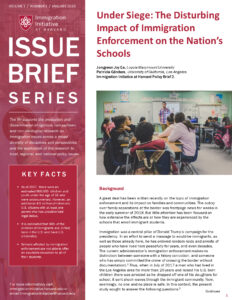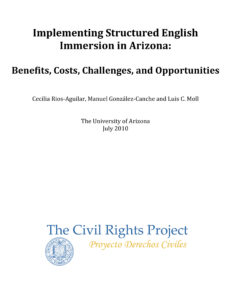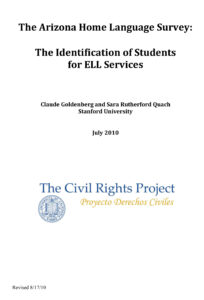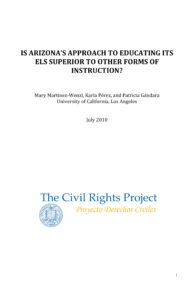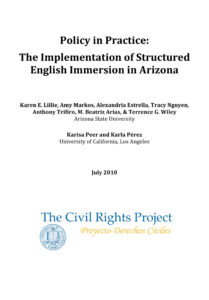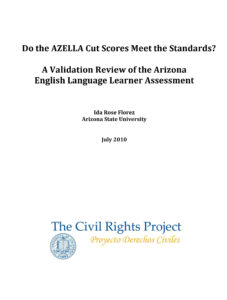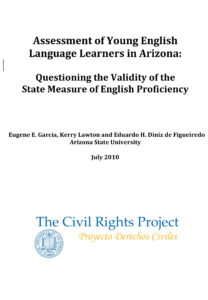This is one of nine papers of the Arizona Educational Equity Project: 21 senior scholars and advanced graduate students from four major research universities joined together, under the aegis of the Civil Rights Project at UCLA, to produce the studies on the condition of English learner students in Arizona.
Abstract:
This report reviews achievement gaps in both reading and math between ELL and non-ELL students in Arizona over the post-Proposition 203 period 2005-2009 and during the first year of implementation of the 4 hour ELD block, 2008-09. The study finds that Arizona has made little to no progress in closing the achievement gap between ELL and non-ELL students during this period. It also compares achievement gaps in reading and math over the same period between Arizona and Utah and Washington DC, two educational entities with vastly different spending policies. Here, the study argues that, notwithstanding changes in tests and proficiency thresholds in the states over this period of time, the relative position of Arizona vis-a-vis these comparison entities remains very similar, with Arizona continuing to lag behind both in percent of ELL students achieving proficiency in reading and math. The study concludes that Arizona is on the wrong path for closing achievement gaps for its ELL students and that this is due, at least in part, to its highly restrictive language instruction policies.
For more information on the series, view the Arizona Educational Equity Project Overview.
The Arizona Educational Equity Project grew from the class action lawsuit of Horne v. Flores, which was initially brought against the state of Arizona in 1992 on behalf of English language learners (ELLs) there. The case reached the U.S. Supreme Court, which issued a ruling on June 25, 2009, establishing new legal standards for the EEOA but also returning the case to the Federal District Court in Arizona, to examine Arizona’s instructional policies for ELLs. The issues argued in the Arizona court had important implications for the educational rights of the tenth of U.S. students classified as ELL and for the federal law that protects them. The challenge to the research community was to provide the best possible information on how ELL students were faring under current Arizona educational policies. The Civil Rights Project spearheaded the Arizona Educational Equity Project to generate the most up-to-date research on the equality of educational opportunity for English learners.
In compliance with the UC Open Access Policy, this report has been made available on eScholarship:

